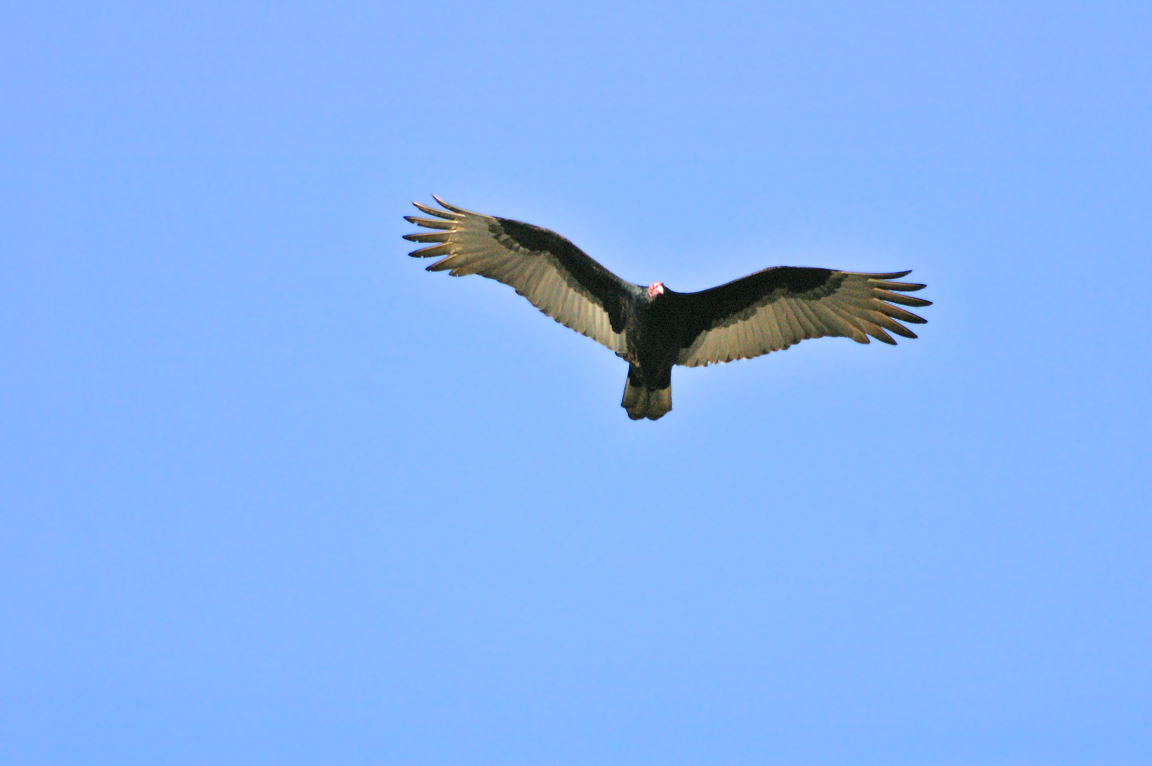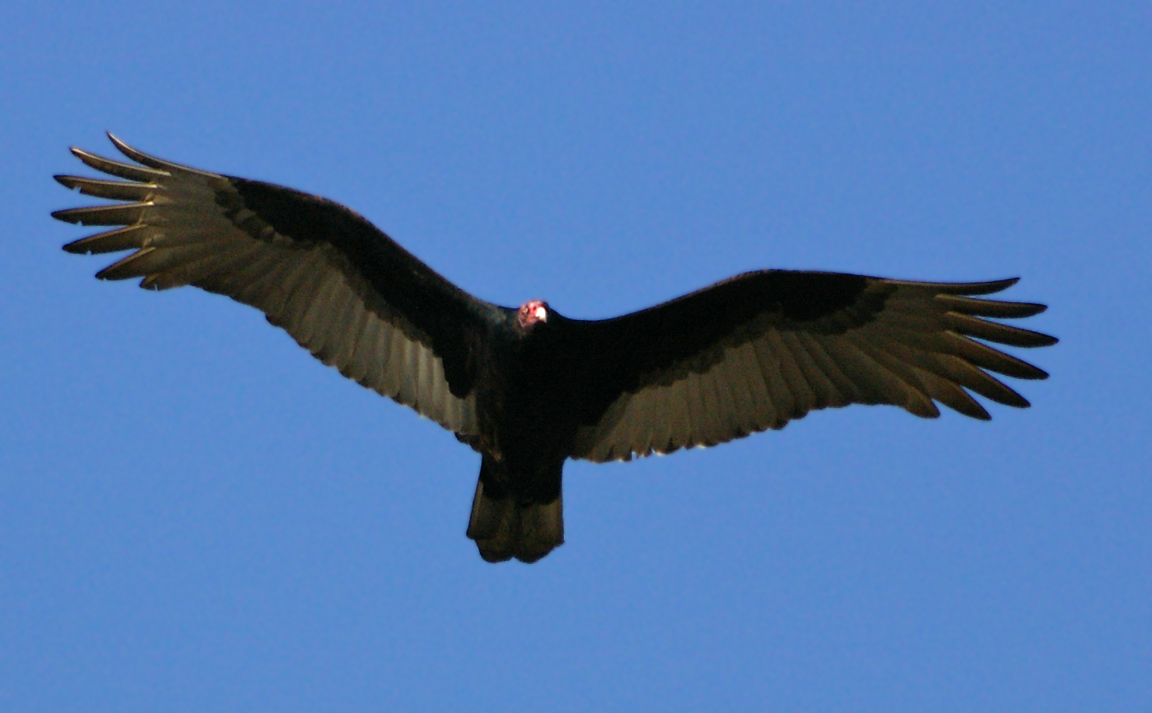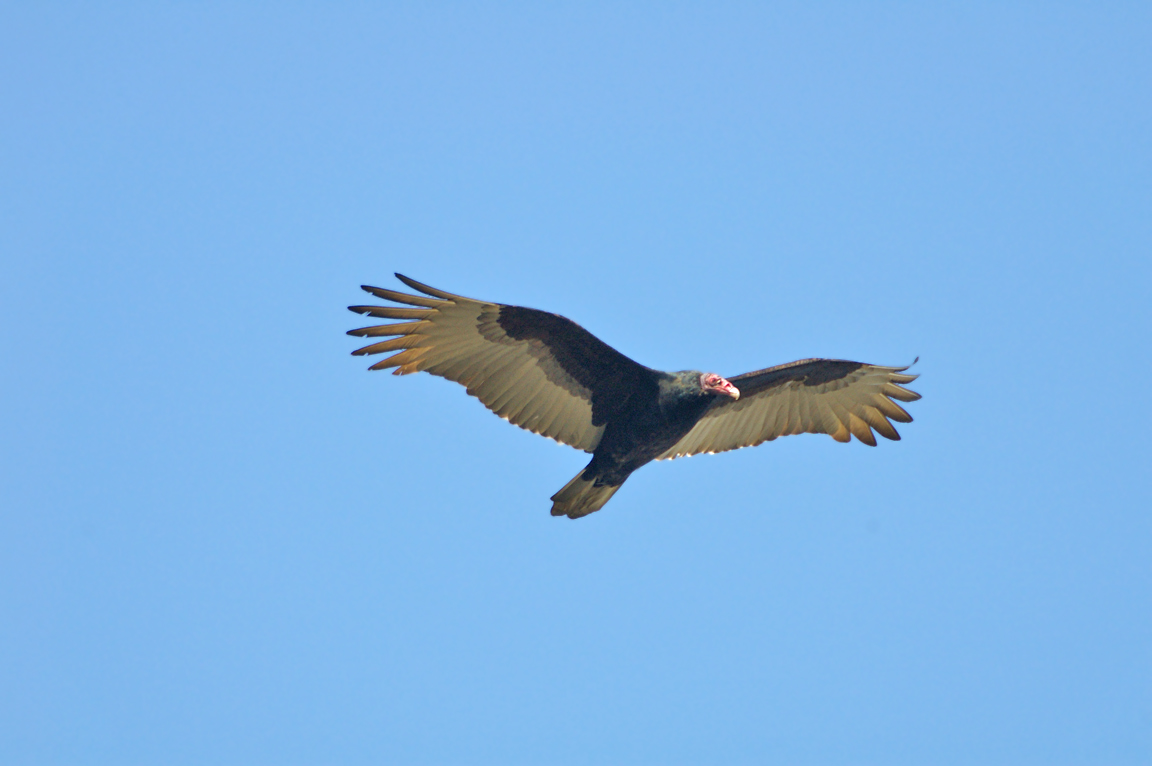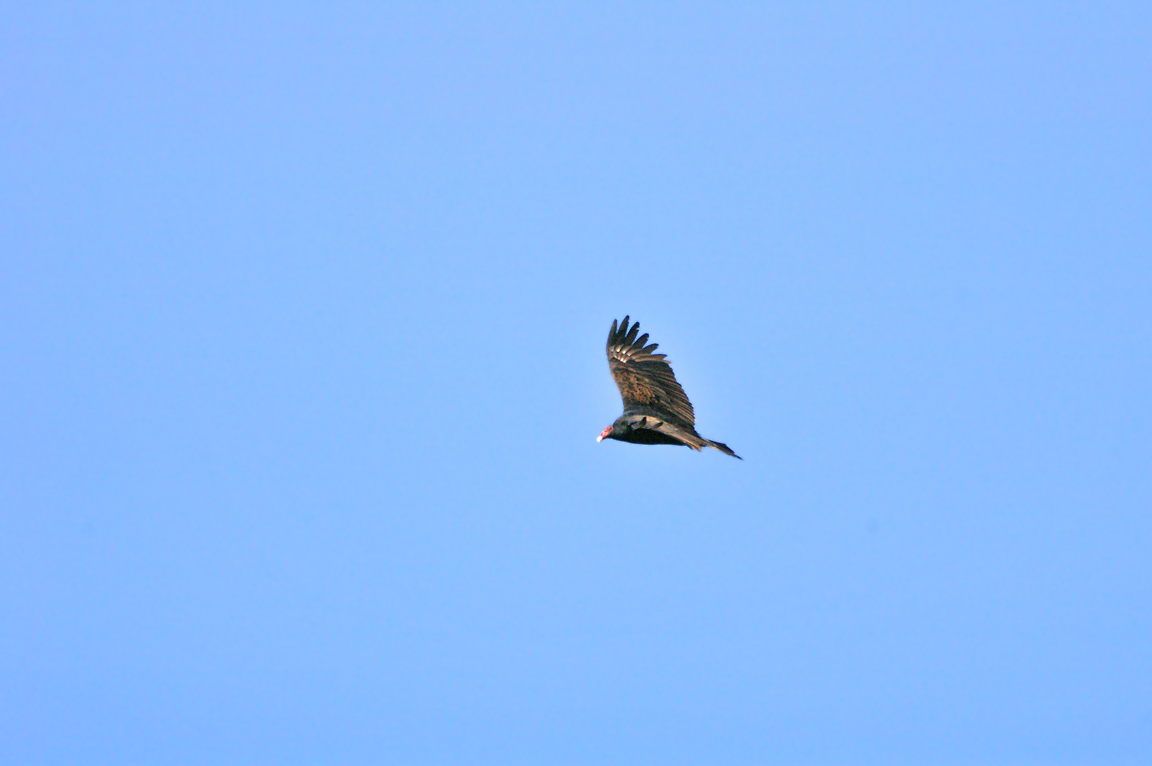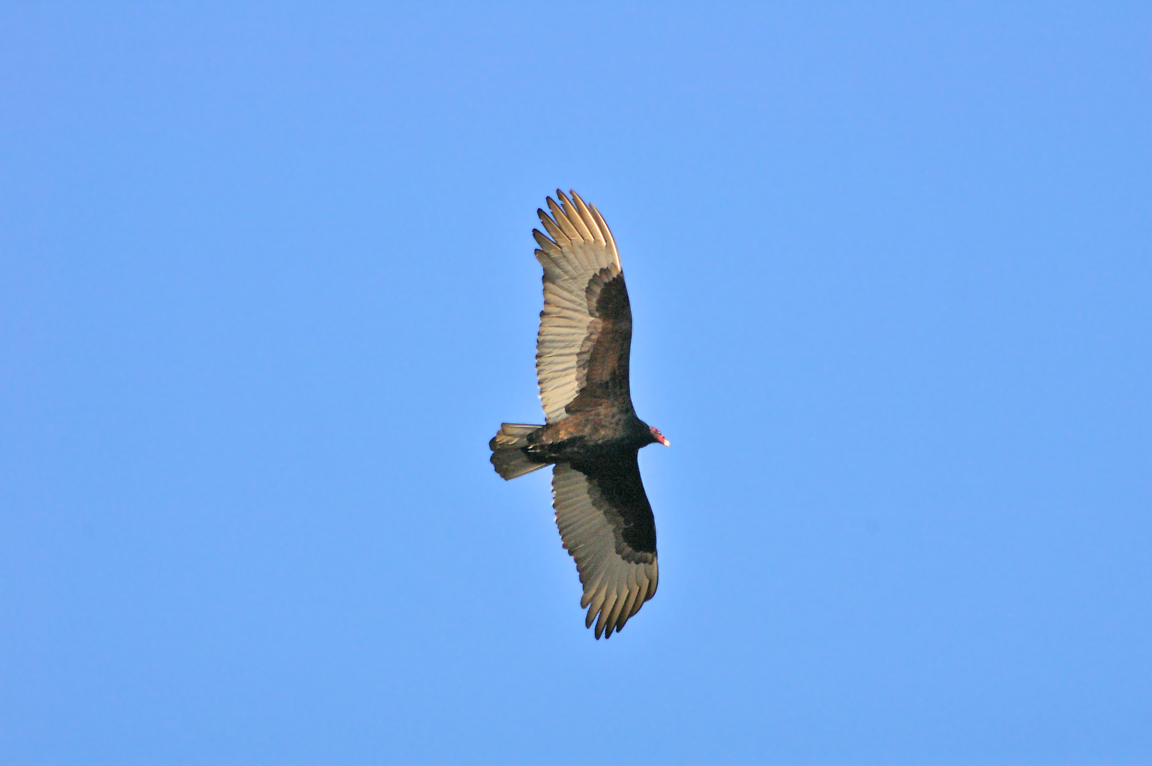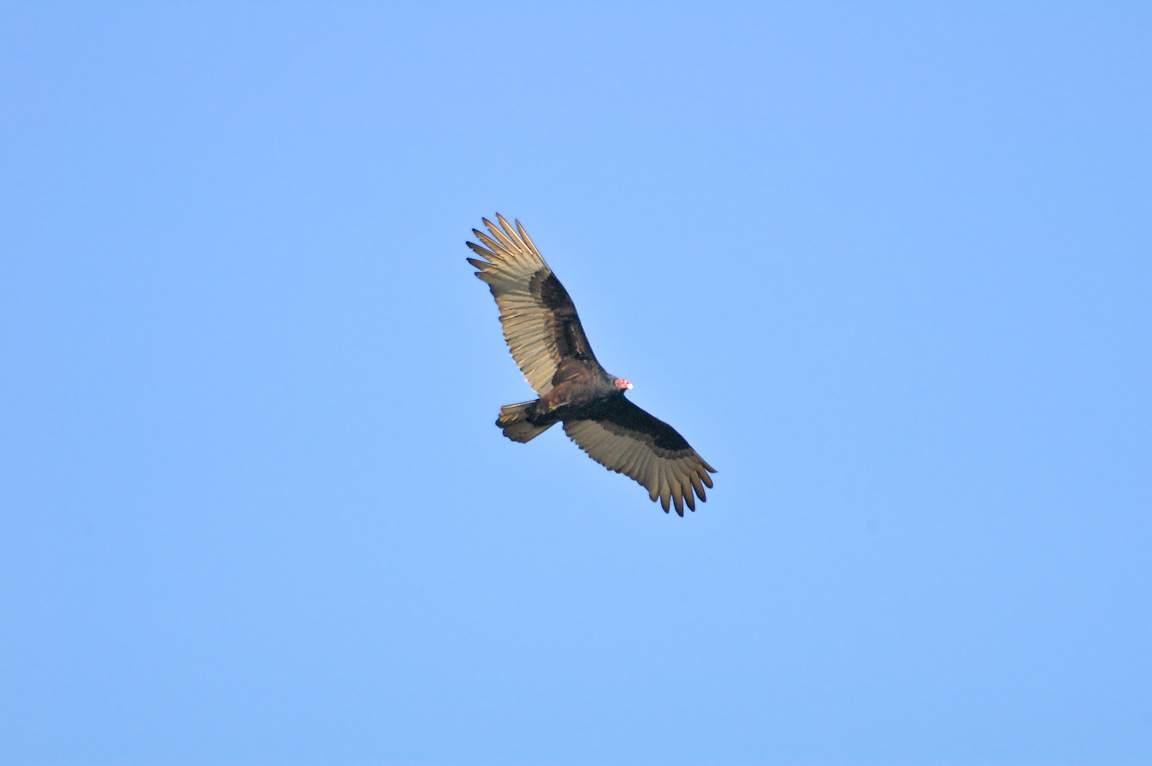|
|
|
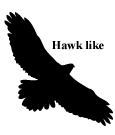 |
Turkey Vulture
|
| Cathartes aura | |
Although it has an ugly, bare-skinned face, the Turkey Vulture is beautiful on the wing. Seldom does this graceful and talented bird flap its wings as it soars over large areas searching for carrion.
Interesting Information
-
The Turkey Vulture uses its sense of smell to locate carrion. The part of its brain responsible for processing smells is particularly large, compared to other birds. Its heightened ability to detect odors allows it to find dead animals below a forest canopy.
-
The Turkey Vulture maintains stability and lift at low altitudes by holding its wings up in a slight dihedral (V-shape) and teetering from side to side while flying. It flies low to the ground to pick up the scent of dead animals.
-
Like its stork relatives, the Turkey Vulture often defecates on its own legs, using the evaporation of the water in the feces to cool itself down.
-
The Turkey Vulture usually forages alone, unlike its smaller, more social relative, the Black Vulture. Although one Turkey Vulture can dominate a single Black Vulture at a carcass, usually such a large number of Black Vultures appear that they can overwhelm a solitary Turkey Vulture and take most of the food.
Description
Adult Description
-
Size: 64-81 cm (25-32 in)
-
Wingspan: 170-178 cm (67-70 in)
-
Weight: 2000 g (70.6 ounces)
-
Large soaring bird.
-
Long wings and tail.
-
Body feathers entirely blackish-brown.
-
Red head mostly unfeathered.
-
Flight feathers on wings appear silvery-gray underneath, contrasting with the darker wing linings.
-
Red head mostly unfeathered.
-
Relatively short, hooked bill ivory-colored.
-
Soars for long periods, flaps wings infrequently and slowly.
-
While soaring holds wings slightly up in a V shape.
Sex Differences
Sexes appear similar, but female slightly larger.
Immature
Juvenile has gray head with black beak tip.
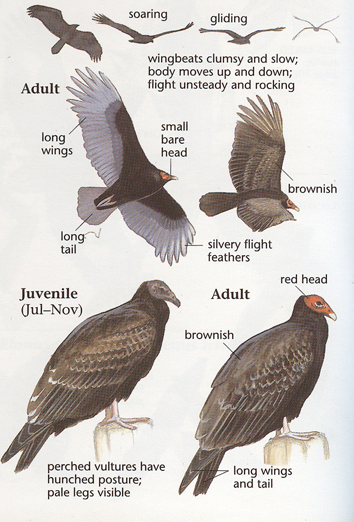
Photo taken from: The Sibley Field Guide by David Allen Sibley
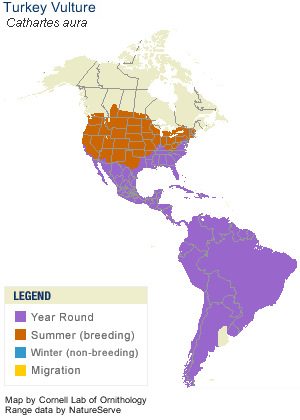
© 2003 Cornell Lab of Ornithology
|
Habitat |
|
|
Behavior |
|
Soars over large distances and detects carrion by sight and smell. |
|
Food |
|
Wide variety of carrion, from small mammals to dead cows. Also some insects, other invertebrates, and some fruit. |
Taxonomy
| Kingdom: | Animalia |
| Phylum: | Chordata |
| Subphylum: | Vertebrata |
| Class: | Aves |
| Order: | Accipitriformes |
| Family: | Cathartidae |
| Genus: | Cathartes |
| Species: | Cathartes aura |
| Subspecies: | Cathartes aura aura |
| Cathartes aura septentrionalis | |
| Cathartes aura teter |
Similar Species |
|
|
Bird Sound |
|
Usually silent. Makes hiss at carcasses, roosts, and nest. |
|
Eggs look like this |
|
Photo taken from: ARCTOS Collaborative Collection Management Solution |
|
Bird Sound |
|
Usually silent. Makes hiss at carcasses, roosts, and nest. |
Videos
Turkey Vultures
Up close in bad lighting
